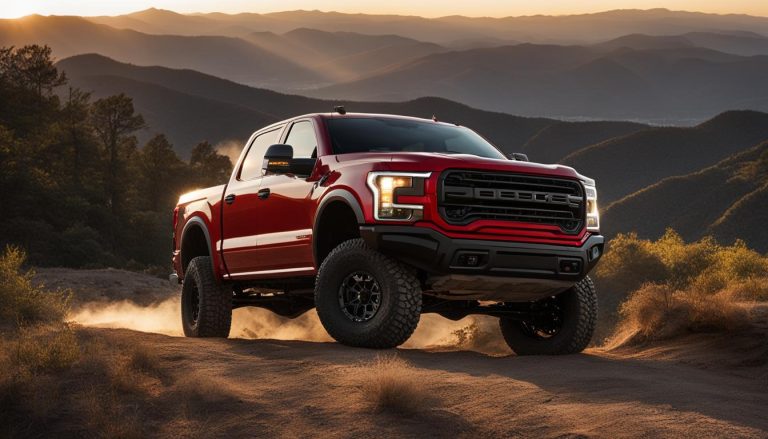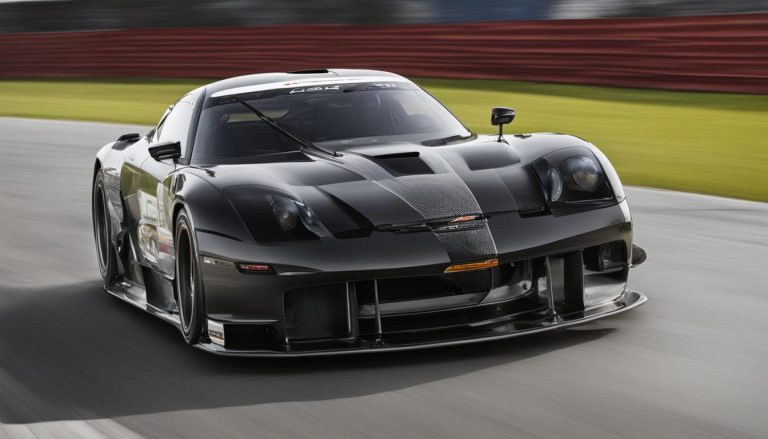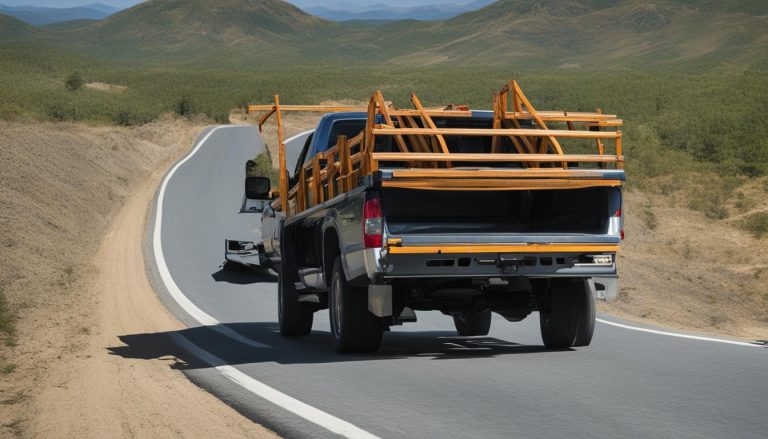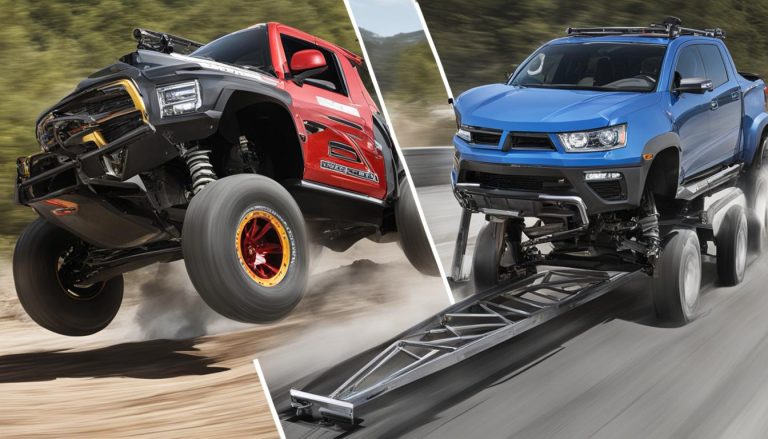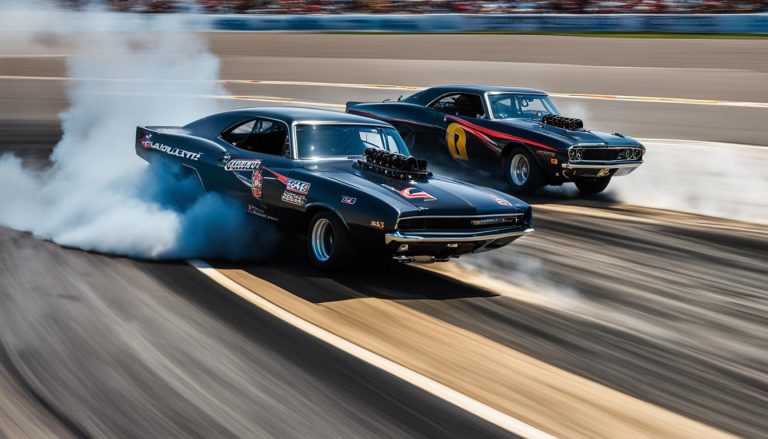What Traction Bars Do to Enhance Your Ride
If you’re looking to improve the performance of your car without breaking the bank, traction bars might be the answer you’re looking for. But what do traction bars do? Why are they so good and transforming your ride?
Key Takeaways:
- Traction bars prevent axle wrap and improve traction and stability.
- They reduce wheel hop and tire spin, resulting in better acceleration and launch control.
- Traction bars enhance handling in corners and overall vehicle stability.
- They extend the lifespan of driveline components and maintain proper pinion angle.
- Installing traction bars is a cost-effective way to enhance your car’s performance.
Traction bars are a cost-effective upgrade that can greatly enhance the traction and stability of your vehicle. Their main function is to prevent axle wrap, which occurs when the rear axle rotates under hard acceleration. This rotation can lead to wheel hop and tire spin, resulting in a loss of traction.
What Do Traction Bars Do
Traction bars are solidly mounted to the rear axle housing and extend forward to, or near, the front spring eye. When the axle rotates, the bars come into contact with the springs, preventing rotation and spring bind. This ensures that power is efficiently transferred to the pavement, improving traction and stability.
The benefits of installing traction bars are numerous. Not only do they reduce wheel hop and tire spin, but they also enhance acceleration and launch control. Handling in corners is improved, providing better overall vehicle stability. Moreover, traction bars help extend the lifespan of driveline components, such as the rear axle, driveshaft, and u-joints. They also play a crucial role in maintaining proper pinion angle, which is essential for drivetrain efficiency.
How Do Traction Bars Work?
Traction bars come in various designs, including slapper-style bars, ladder bars, and traction block systems. The function of traction bars is to limit axle movement and prevent axle wrap.
Slapper-style traction bars, also known as slapper bars or traction masters, work by preventing the front half of the leaf spring from wrapping up under acceleration. These bars are typically adjustable, allowing for fine-tuning of their action.
Ladder bars, on the other hand, are rigid bars that are mounted to the rear axle housing and frame. They provide a solid connection between the two and eliminate axle wrap completely.
Traction block systems, like the ones offered by One Up Offroad, use blocks and heim joints to control axle movement and transfer power to the ground. These systems are highly effective and offer minimal impact on ride quality.
Benefits of Using Traction Bars
Using traction bars can provide numerous benefits for your vehicle. Firstly, they improve traction and reduce wheel hop and tire spin, allowing for better acceleration and launch control. This is particularly important for drag racing or high-performance applications.
Traction bars also improve handling by reducing axle movement, leading to better stability and cornering ability. By preventing axle wrap, traction bars extend the life of your driveline components, including the rear axle, driveshaft, and u-joints.
Additionally, they can help to maintain proper pinion angle, which is crucial for drivetrain efficiency. Overall, using traction bars enhances the safety and performance of your vehicle on the road or track.
Whether you’re a professional racer or a casual enthusiast, traction bars offer an effective solution to improve the performance and handling of your vehicle. By investing in traction bars, you can experience the advantages they provide, including:
- Enhanced traction and reduced wheel hop
- Improved acceleration and launch control
- Better handling and stability
- Extended driveline component life
- Optimized pinion angle for drivetrain efficiency
Regardless of your specific needs or driving style, traction bars are an important upgrade that can greatly enhance your ride. Let’s explore the various types of traction bars available in the next section.
Types of Traction Bars
When it comes to traction bars, there are several options to choose from, each with its own unique design and advantages. Let’s explore the different types of traction bars available on the market:
Slapper-Style Bars:
Slapper-style bars are a popular choice for street machines equipped with leaf-spring suspension. These bars are known for their ease of installation and adjustable action, allowing you to fine-tune their performance according to your specific needs. Slapper-style bars prevent the front half of the leaf spring from wrapping up under acceleration, effectively reducing wheel hop and improving traction.
Ladder Bars:
Ladder bars offer a more rigid and precise connection between the rear axle and frame. These bars are commonly used in high-performance applications and drag racing, where maximum stability and axle control are crucial. By completely eliminating axle wrap, ladder bars provide superior traction and enhanced launch control.
Traction Block Systems:
Traction block systems, such as the ones offered by One Up Offroad, utilize blocks and heim joints to control axle movement. These systems can be customized to fit different vehicles and suspension setups, making them a versatile choice. Traction block systems are highly effective in reducing axle wrap and improving traction, making them particularly suitable for off-road enthusiasts and those seeking optimal performance.
Choosing the right traction bars depends on your specific vehicle, suspension setup, and intended use. Consider factors such as your vehicle’s weight, power output, and driving style to determine which type of traction bar will best suit your needs.
| Traction Bar Type | Features | Best For |
|---|---|---|
| Slapper-Style Bars | Easy installation, adjustable action | Street machines with leaf-spring suspension |
| Ladder Bars | Rigid and precise connection, minimal axle wrap | High-performance applications, drag racing |
| Traction Block Systems | Customizable, effective axle control | Off-road enthusiasts, optimal performance |
Traction bars play a crucial role in enhancing traction, reducing wheel hop, and improving overall vehicle performance. Consider your specific requirements and consult with experts if needed to ensure you select the right traction bars for your vehicle.
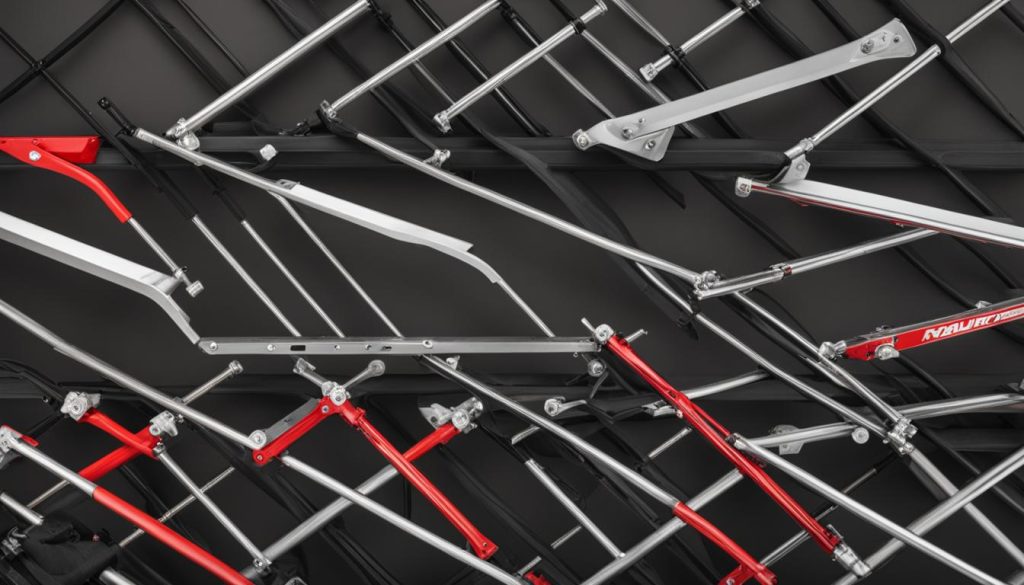
Installing Traction Bars
You’ve made the decision to upgrade your vehicle with traction bars, and now it’s time to install them. Don’t worry, the installation process is relatively straightforward and can be done with basic tools. While the specific instructions may vary depending on the brand and type of traction bars you choose, the general steps remain the same. Follow this guide to ensure a successful installation.
Step 1: Gather the Tools and Materials You’ll Need
Before you begin the installation, gather the necessary tools and materials. Here’s a basic list to get you started:
- Socket set
- Wrenches
- Jack and jack stands
- Torque wrench
- Measuring tape
- Marker or pen
Step 2: Prepare Your Vehicle
Prior to installing the traction bars, park your vehicle on a level surface and engage the parking brake. Use the jack and jack stands to raise the rear of the vehicle, ensuring it is securely supported.
Step 3: Locate the Mounting Points
Refer to the manufacturer’s instructions to locate the mounting points for the traction bars on the rear axle housing and front spring eye. Ensure that the mounting points are clean and free of any debris or rust that could affect the installation.
Step 4: Install the Traction Bars
Place the traction bars in position, aligning the mounting holes with the corresponding points on the rear axle housing and front spring eye. Use the appropriate hardware provided by the manufacturer to secure the bars in place. Tighten the hardware to the recommended torque specifications, using a torque wrench for accuracy.
Step 5: Adjust the Traction Bars
Proper adjustment of the traction bars is crucial for optimal performance and safety. Adjust the length and position of the bars according to your vehicle’s suspension geometry and desired level of performance. This may require trial and error and fine-tuning to achieve the desired results. Refer to the manufacturer’s instructions for guidance on adjusting the traction bars.
Step 6: Lower the Vehicle and Test
Once the traction bars are installed and adjusted, carefully lower the vehicle off the jack stands and onto the ground. Take your vehicle for a test drive to ensure everything is functioning properly. Pay attention to how the vehicle handles, accelerates, and maintains traction.
Remember, if you’re unsure about any step or have any concerns during the installation process, it’s always best to consult with a professional. Proper installation and adjustment of the traction bars are essential for maximizing their benefits and ensuring your safety.
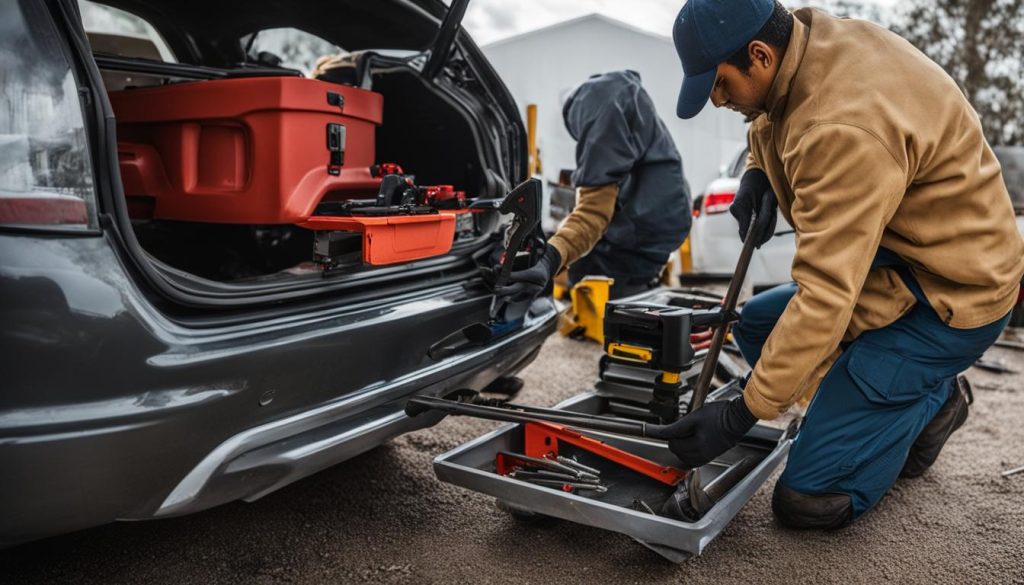
| Tools and Materials |
|---|
| Socket set |
| Wrenches |
| Jack and jack stands |
| Torque wrench |
| Measuring tape |
| Marker or pen |
Considerations for Street Use
Traction bars can be a valuable addition to street-driven vehicles, providing enhanced performance without sacrificing ride quality. While some may associate traction bars solely with high-performance applications or off-road adventures, they are equally effective and suitable for everyday street use. When considering traction bars for street use, it’s important to understand their impact on ride quality and choose the right bars designed specifically for this purpose.
When properly installed and adjusted, traction bars typically have a minimal impact on ride stiffness and comfort. The suspension setup and type of bars chosen can influence the level of ride stiffness experienced. However, with advancements in design and engineering, many traction bars on the market are specifically engineered to offer a balance between performance and comfort.
Some traction bars even offer adjustable action or have different ride settings, allowing you to fine-tune the level of stiffness according to your preference. This flexibility ensures that you can optimize performance while still enjoying a comfortable ride on regular roads.
In order to maintain a smooth and enjoyable driving experience, it is crucial to choose traction bars that are designed for street use. These bars are specifically engineered to minimize any negative impact on ride quality, ensuring that you can reap the benefits of improved traction and stability without sacrificing comfort. To further enhance the ride quality, make sure to use high-quality components and follow proper installation procedures to ensure optimal performance.
So, whether you’re looking to improve acceleration, reduce wheel hop, or enhance overall stability during street driving, traction bars can be a reliable and worthwhile addition to your vehicle. With the right bars and proper installation, you can enjoy the benefits of improved performance without compromising on ride quality.

Choosing the Right Traction Bars
When it comes to selecting traction bars for your vehicle, there are several important factors to consider. First and foremost, you need to determine the type of suspension your vehicle has – whether it is leaf-spring or coil-spring. This will help you choose traction bars that are compatible with your specific setup and ensure proper installation.
Next, think about the intended use of your vehicle and the level of performance you desire. Are you looking to improve acceleration and launch control for drag racing? Or do you need better stability and cornering ability for high-performance applications? Understanding your goals will help you narrow down your options and choose traction bars that meet your specific needs.
Another crucial consideration is the adjustability of the traction bars. Some brands offer bars with adjustable action or different settings to accommodate various driving conditions. This flexibility can be beneficial, allowing you to fine-tune the performance of your vehicle and optimize traction based on different scenarios.
Before making a purchase, it’s always a good idea to research different brands and read reviews from other customers. This will give you valuable insights into the reputation and reliability of the product. Choosing a reputable and trusted brand ensures that you are investing in high-quality traction bars that will deliver the desired performance and durability.
Finally, when in doubt, don’t hesitate to consult with experts or professionals who have experience with traction bars. They can provide valuable recommendations and advice based on your specific vehicle and goals, helping you make an informed decision.
FAQ
What do traction bars do?
Traction bars are cost-effective upgrades that enhance the performance of your car. They work by preventing axle wrap, which is the rotation of the rear axle under acceleration, leading to improved traction and stability.
How do traction bars work?
Traction bars limit axle movement and prevent axle wrap. They are solidly mounted to the rear axle housing and extend forward to, or near, the front spring eye. When the axle rotates, the bars contact the springs, reducing rotation and spring bind, resulting in efficient power transfer to the pavement.
What are the benefits of using traction bars?
Using traction bars reduces wheel hop and tire spin, improves acceleration and launch control, enhances handling in corners, and increases overall vehicle stability. They also extend the life of driveline components and help maintain proper pinion angle.
What types of traction bars are available?
There are different types of traction bars available, including slapper-style bars, ladder bars, and traction block systems. Slapper-style bars are adjustable and prevent the front half of the leaf spring from wrapping up. Ladder bars offer a rigid connection between the rear axle and frame, eliminating axle wrap. Traction block systems use blocks and heim joints to control axle movement.
How do I install traction bars?
Installing traction bars is a relatively straightforward process that requires basic tools. The specific instructions may vary, but generally, the bars need to be solidly mounted to the rear axle housing and extend forward to the front spring eye. It’s important to adjust the length and position of the bars according to your vehicle’s suspension geometry and performance preferences.
Can traction bars be used for street use?
Yes, traction bars can be used on street-driven vehicles without compromising ride quality. While there may be a slight increase in stiffness, it is generally minimal, especially when properly adjusted. Some traction bars even offer adjustable action or different ride settings for a balanced performance and comfort.
How do I choose the right traction bars?
When choosing traction bars, consider the type of suspension your vehicle has and select bars that are compatible. Determine your vehicle’s intended use and desired level of performance. Research different brands and read reviews to ensure reliability. Consulting with experts or professionals can also provide valuable recommendations based on your specific vehicle and goals.

